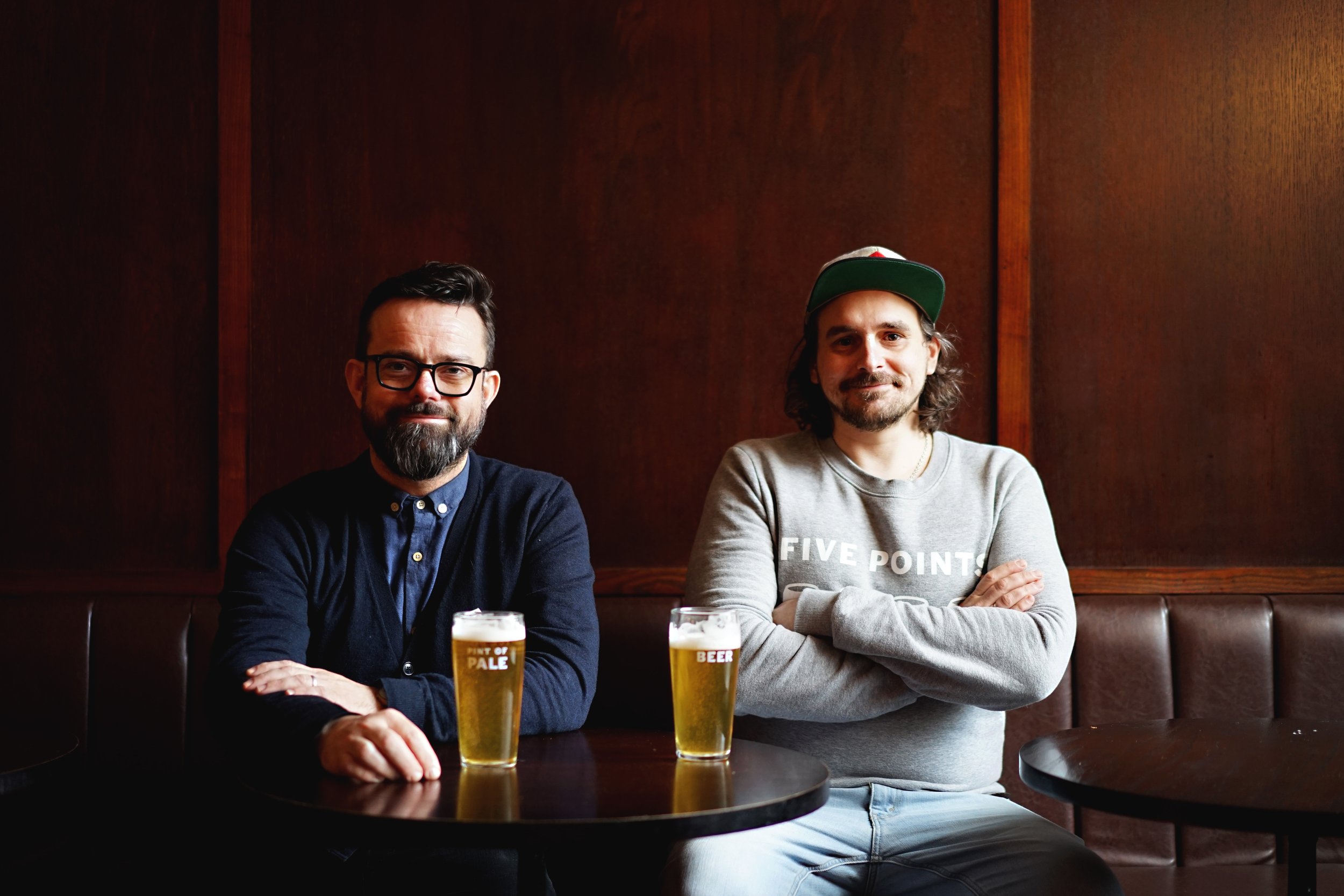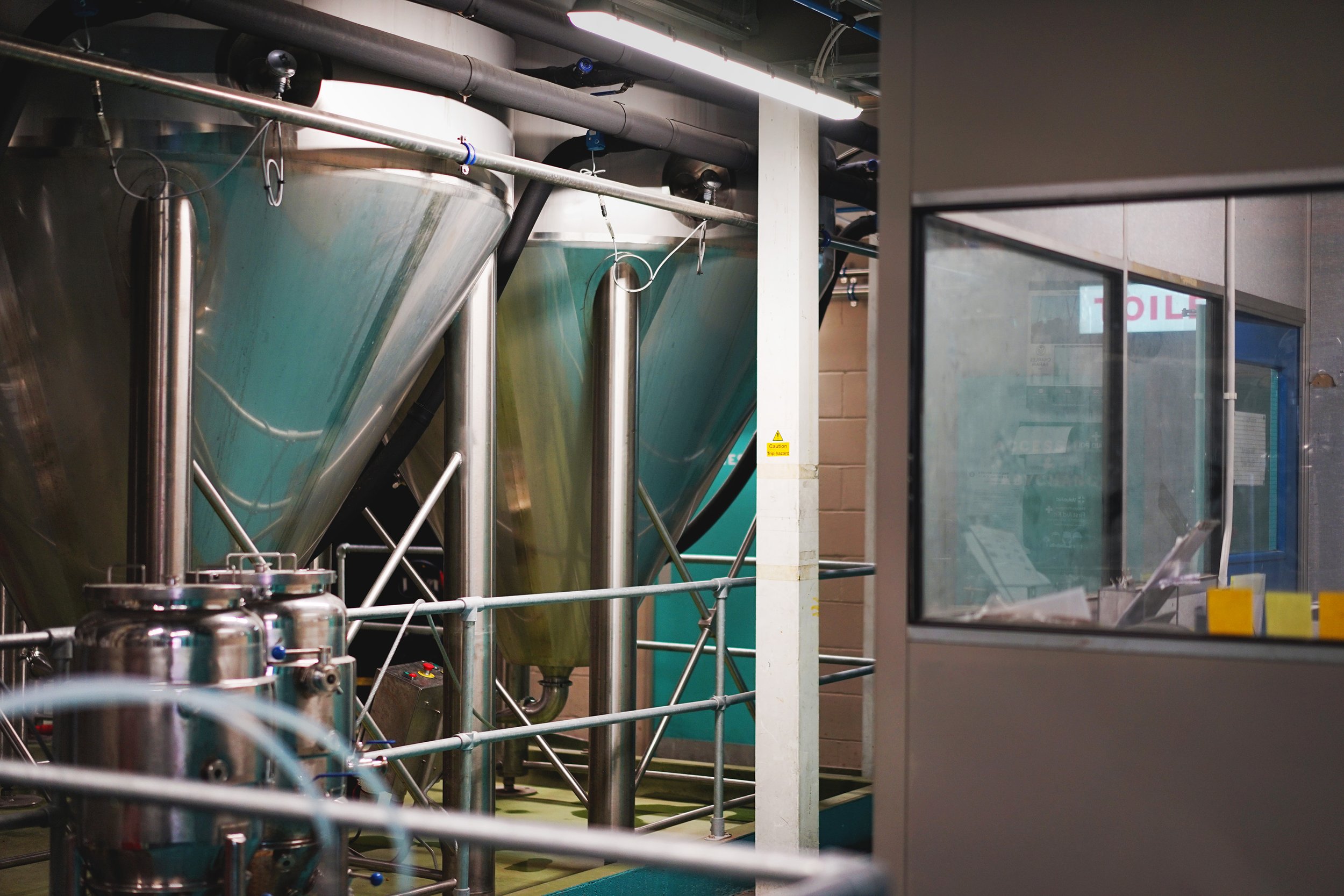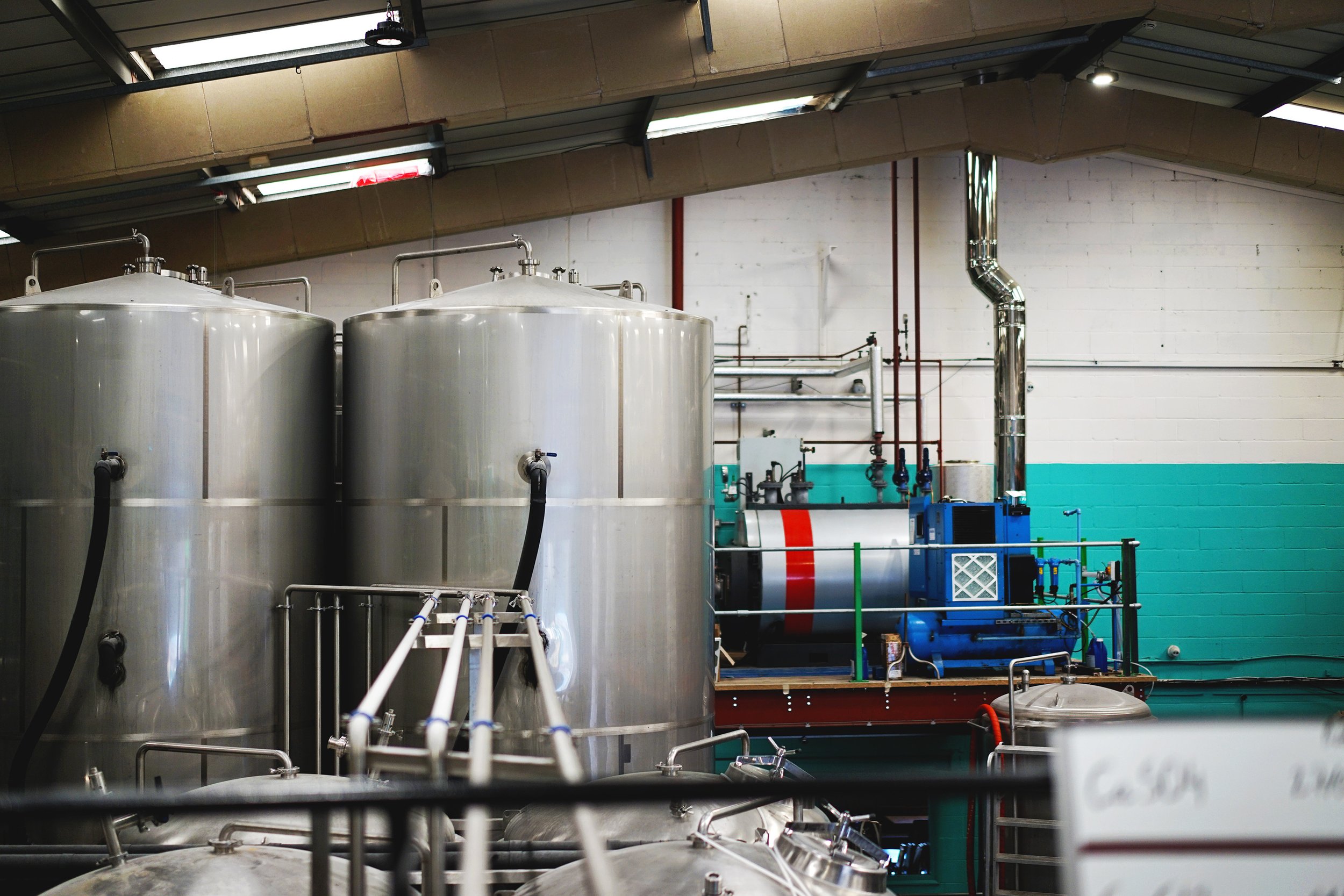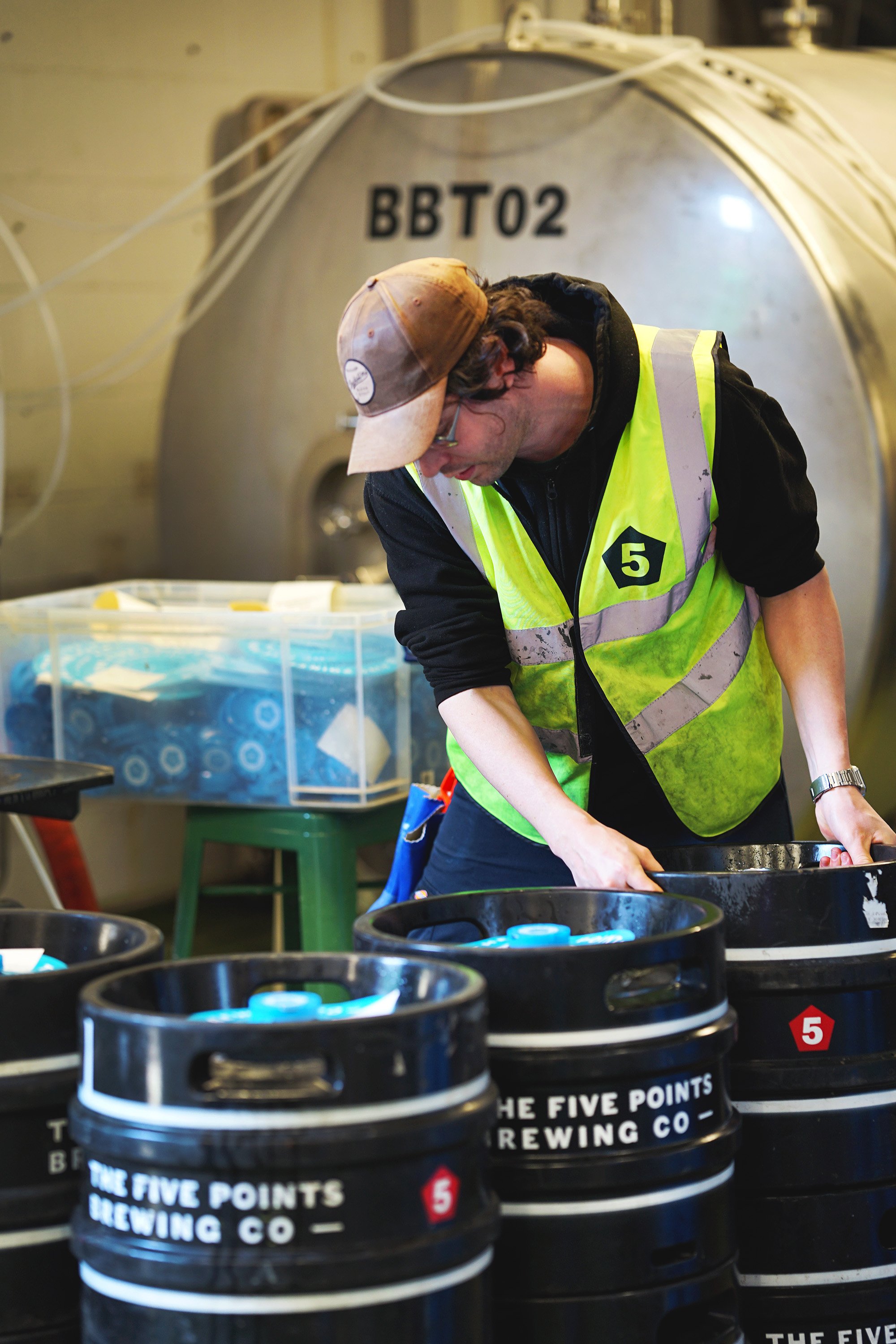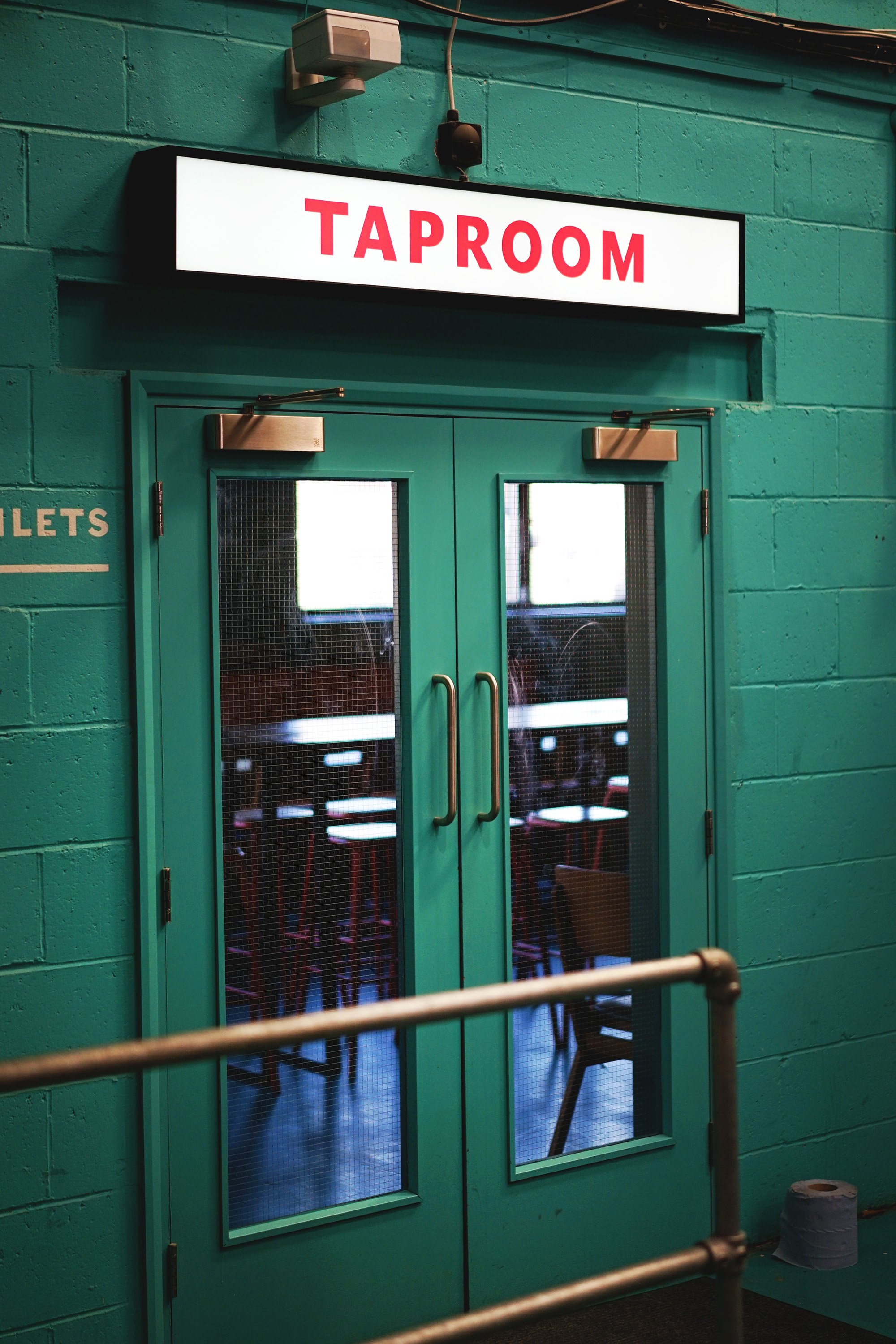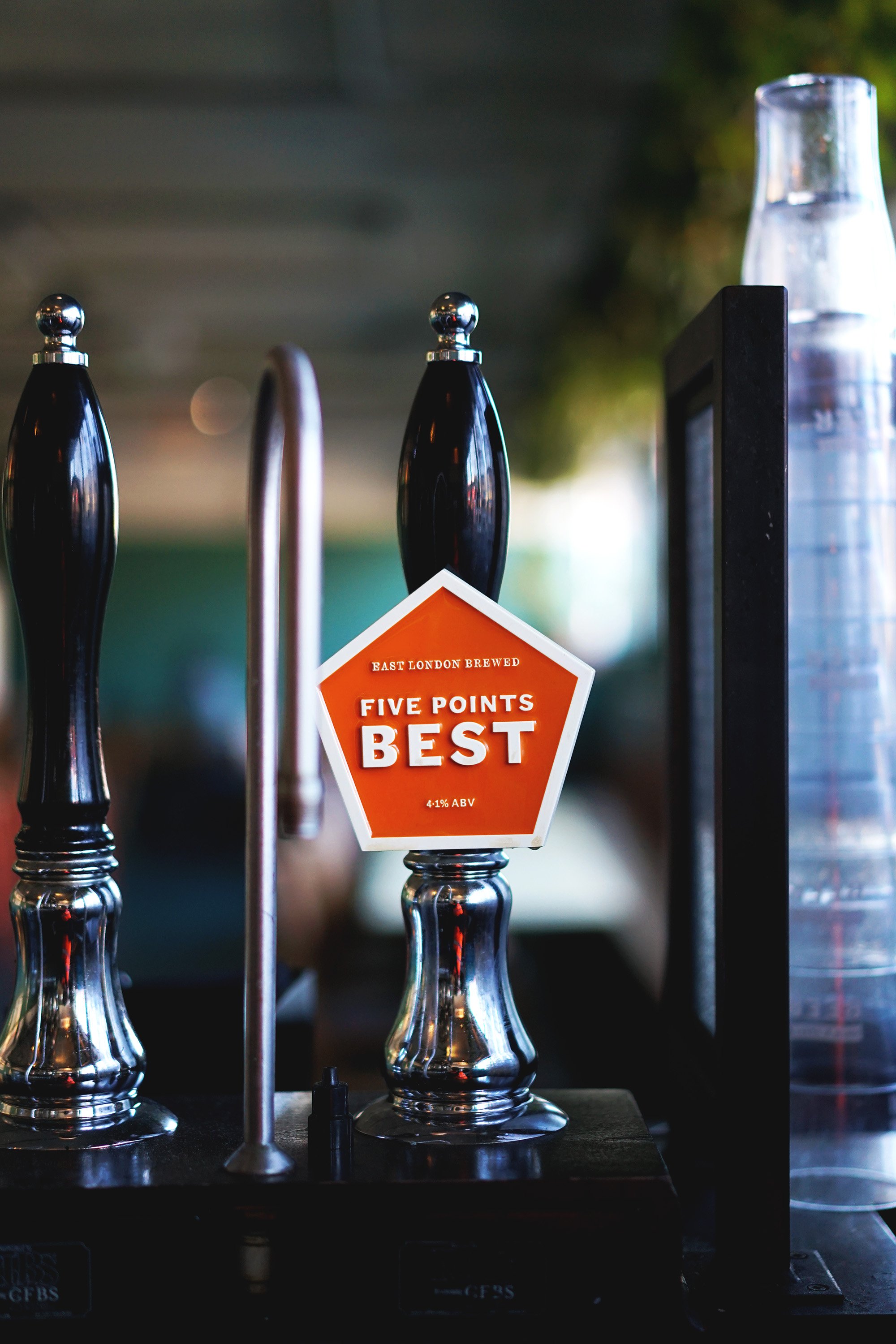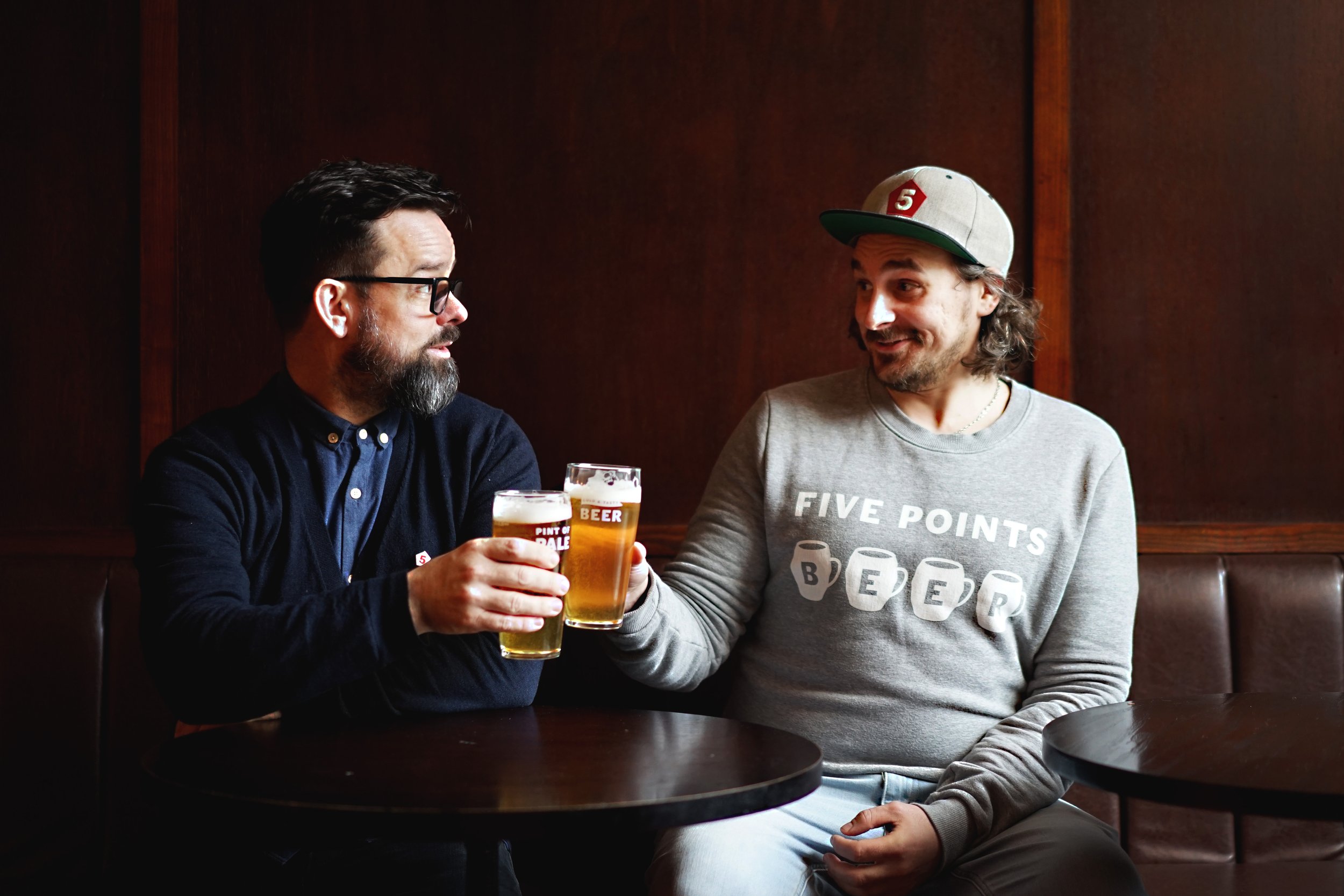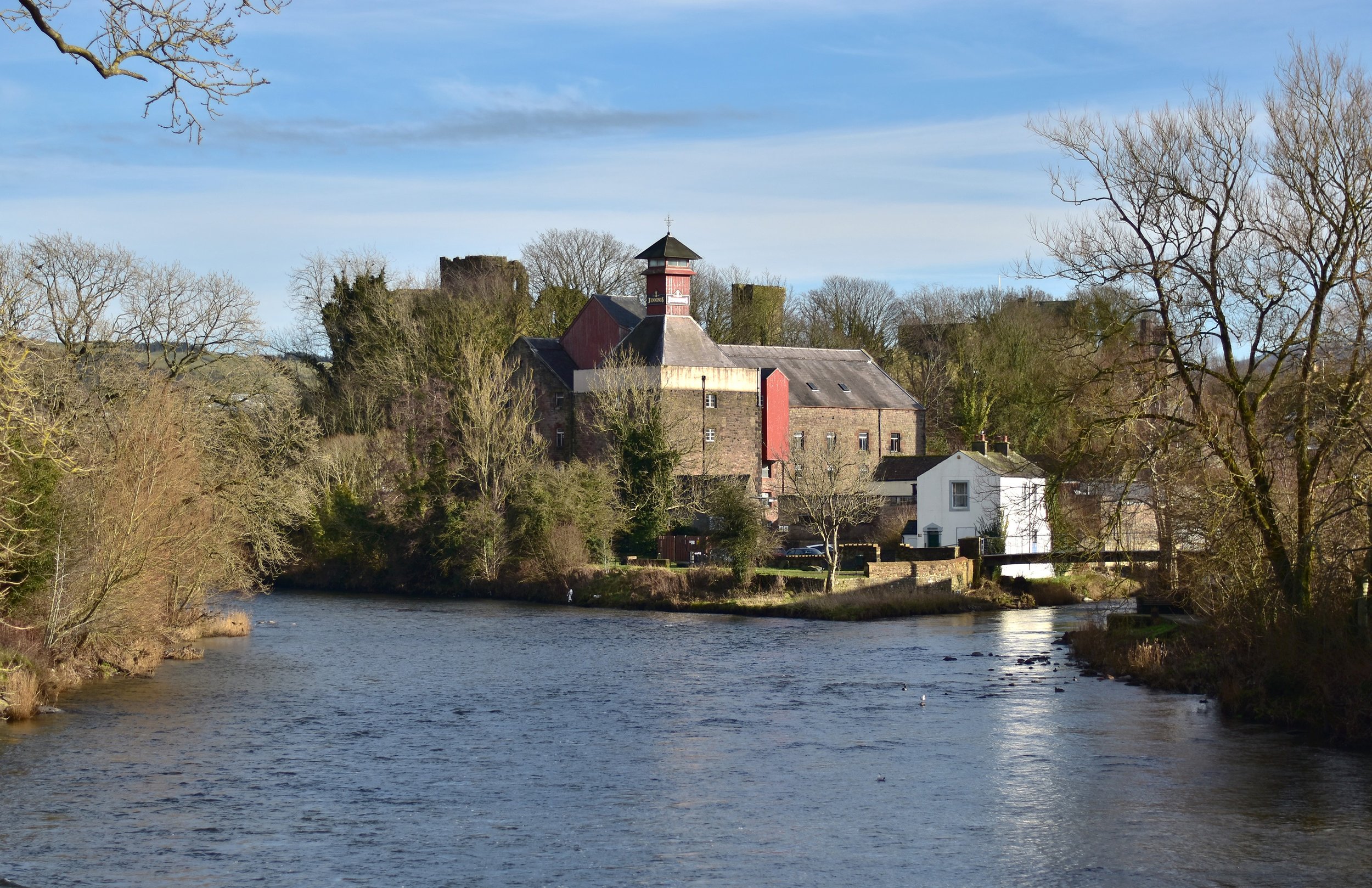Cask Culture for the Future — The Five Points Brewing Company in Hackney, London
In the decade since Ed Mason and Greg Hobbs set up The Five Points Brewing Company in a Hackney Downs railway arch, London's beer scene has changed dramatically.
Back in 2013, the capital was home to less than 15 breweries, but with forward-thinking companies like The Kernel and Sambrook’s already well-established, the pair were concerned they might be late to the party. There are now almost 120 breweries based in London, producing everything from milk stout to strawberry saison. That thought may seem baffling, but it's a testament to the rapid evolution of the city's modern beer scene.
Photography by Matthew Curtis
In a 10-year period in which the London brewing sector has become increasingly saturated, Five Points have managed to not just survive, but thrive. They've expanded from their lovingly-created but slightly hotchpotch railway arch site to a large former warehouse a mile away on Hackney’s bustling Mare Street. This in turn brought the brewery, taproom, office, and storage spaces under one roof.
Ed and Greg have moved from brewing, selling, delivering, marketing, and packaging everything themselves, to employing over 40 people. This includes bar staff at the Pembury Tavern, the legendary Hackney boozer they've owned since 2018, situated on the Five Points junction which inspired the brewery’s name. (Ed also owns Whitelocks Ale House, the Turks Head and Meanwood Alehouse in Leeds, where he now lives).
“Accessible, consistent beers,” is Ed's simple explanation for their longevity. “We've never chased the latest faddish trends, with no disrespect to those breweries that do… but that's just not our style.”
Driven by a passion for British cask beer heritage and a commitment to celebrating local ingredients, Five Points produce nuanced, refreshing beers that pay tribute to real ale tradition while subtly incorporating exciting, contemporary flavours.
Their XPA, made with Simpsons Extra-pale Malt and hopped generously with Citra and Galaxy, is light and sessionable, laced with a tropical fruit tang. Five Points Best, meanwhile, is a testament to the greatness of the British cask tradition: a crisp, refreshing, but deeply flavoursome bitter, heavy on Fuggles—sourced from Hukins Hops in Kent—and explosive in its disapproval of the notion that Best is boring.
“When we were founding the company, it was a really exciting time,” Greg tells me. “There was a real buzz about craft beer, it wasn't quite as ubiquitous as it is now.”
According to Ed, breweries like Thornbridge in Derbyshire and nearby Camden Town Brewery (the latter now owned by AB InBev) helped “educate people’s palates and teach people the idea that beer could be flavoursome and more interesting, and could be brewed locally and owned independently.”
“There's a danger of taking that for granted, but that wasn't there 12 years ago,” he adds.
During the afternoon I spent with the Five Points team it quickly became clear how firmly they believe in the beauty of cask beer.
“Cask beer is the very definition of craft beer,” Ed says. “Some people can think of cask beer as something different from craft… that it's boring, brown, British bitter, and craft beer is all about New World hops, and intense flavour experiences, and carbonation.”
““Cask beer is the very definition of craft beer.””
“But craft beer is actually about provenance and quality and artisanal approaches to manufacturing,” he adds. “And it's not just about the manufacturing process, it's the dispense process. It's a living, breathing product that continues to condition in the cellar, and that is an art form in itself.”
Crucially, it's an art form that The Five Points Brewing Company wants to educate people about. At the Pembury Tavern, they regularly host cellar and cask beer training courses, spreading knowledge about how to look after this uniquely British product, and inviting hospitality staff to the brewery for free tours. We talk about the frustrating lack of consistency when it comes to finding a good quality pint of cask beer, particularly in London's pubs. How can well-kept cask ale become more widely available?
“I think it's education,” Greg says. “Educating the consumers and the people who are looking after the beer. There are a lot of pubs that'll have cask on for the sake of it, and either don't know what they're doing, or don't care what they're doing, and it's a bad representation of the beer.”
“Nine times out of ten, the bad pint of cask beer is a training and education issue,” Ed concurs. “People are leaving the beer in the bar too long, so it's gone out of condition, because it's a living product. Historically, the rule of thumb is three days—depending on the strength of beer and type of beer, that can get to five days—but anything after that, it shouldn't be served. Before you pull that first pint of cask, you do have to taste it, there's a sensory experience to go through, unlike keg. It's about looking after the beer.”
Building a strong relationship between brewery and pub is essential to the Five Points, and it's something its head of production Max Descloux was impressed by when he moved to London from his native Switzerland.
“[The pubs] need to basically finish the beer for us,” Max says. “They need to do the best job to ensure that at the end, the pint is perfect. I thought that was very interesting, because I'm from a country where there's distribution, and you don't really know where your beer ends up. But with cask, it seems like there's always a relationship between the brewers and the pub."
This idea is confirmed by Marcus Grant, landlord at The Wenlock Arms, a cosy backstreet boozer between Angel and Old Street that's known for its generous selection of well-kept cask ales.
“They know what they're doing,” Marcus tells me. “They're great beers, they're really consistent, and I know I'm going to sell them. I don't always have [Five Points] on, because there's nothing that I always have on, but invariably I'll go back to Five Points Pale and Best.”
The brewing team regularly check in at The Wenlock, one of many pubs they stock (they're a predominantly draught-beer-focused company, after all) but, maintaining these relationships is just one element of the wide-ranging roles The Five Points play within their local community. As the first UK brewery to be accredited by the Living Wage Foundation as a Real Living Wage employer, they've built a reputation for community outreach and ethical practices, a reputation that's underlined by strong connections with people across Hackney Borough.
“We've always been rooted to our community,” Ed says. “We've worked with Hackney Council, and the local Hackney College to develop an apprenticeship scheme for brewers. We've had a number of trainee brewers through our old site from the local community.”
“Each year, we have two charity partners, typically based in the local community… We raise money, and we run things like charity quiz nights at the Pembury Tavern, or food bank drives, [where locals could donate canned food in exchange for cans of Five Points beer],” he adds.
That sense of community responsibility is as important to Five Points’ identity as its tried and tested core range recipes, the popular taproom tours, and the colourful, clean, instantly recognisable pump clips (created by graphic designer Kate Lyons). Localism runs through the heart of the company, a fact evidenced by their ties to Kent hop supplier Hukins, a fifth-generation hop farm just 50 miles away. Greg first met Ross Hukins, the owner of Hukins hops, at CAMRA’s annual Great British Beer Festival, and they've been working together ever since.
“The first beer we brewed with them was a green hop beer,” Greg tells me. “Green hops are picked straight off the bine [rather than being dried, processed and packaged], and you've basically got 24 hours to use them or they start rotting, the benefit being there's lots of oils and aroma and flavour that would normally get driven off during the kilning process.”
“Going down [to Kent] and picking the hops, bringing them back here and throwing them straight in the beer, I fell in love with that idea, and with the fact that it only happens in a very short window, once a year,” he adds.
Five Points host a Green Hop Beer Festival at the Pembury Tavern each autumn in celebration of fresh hop beers produced by breweries across the UK. It's a broader reflection of their love for British ingredients, whether it's Fuggles hops from Hukins, or grain from Simpsons, an independent, family-owned, fifth-generation maltster. But this commitment to British produce can only go so far, with core beers such as Pale, XPA, and JUPA still heavily reliant on North American hops such as Cascade, Mosaic and Citra.
“At the moment, there aren't British varieties of hops that replicate or are equivalent to those really bold US and Australian flavour profiles, commercially available and in scale and in large quantities,” Ed tells me. “But that is starting to change. We can certainly envisage a situation where in five or ten years’ time, we might be in a position where we can brew with all UK hops.”
““They’re great beers, they’re really consistent, and I know I’m going to sell them.””
“Progressive hop farmers like Hukins are developing varieties over here that can compete with them. That's a really exciting thing,” Greg adds. "With growing hops, it can take years from discovering a variety to it actually becoming commercially viable and available.”
The eventual goal is to transition away from a dependence on American and Southern Hemisphere hops that deliver the zest, fruitiness, and wide-ranging aromas people have become used to since the rise of craft beer, to home grown ones that still pack the same punch. In terms of sustainability, this would be a huge achievement. And unsurprisingly for such a forward-thinking enterprise, sustainability consistently shapes the Five Points agenda.
For several years, the Five Points Brewery has used 100% renewable energy sources. They consistently drive towards British ingredients, and they're looking at installing solar panels and switching to electric vans. Greg's hoping to introduce a CO2 recovery system that allows them to use carbon dioxide from their own fermentation process in the brewery, rather than having to order it in from external sources. Over the next 10 years, sustainable practices will be even more central to their plans.
“As well as being sustainable from an environmental point of view, it's also about sustainability for the company long term,” Ed says. “It's a different economic environment at the moment for any company, but particularly for food manufacturers and brewers. Across the board, malted barley went up by 36%, broadly caused by the war in Ukraine. A 36% increase in a core ingredient is insane! Coupled with utility costs, gas and electric… it's been really challenging.”
That makes celebrating their success even more important. During their 10th year, Five Points plan to host several anniversary parties, including a festival showcasing beers that influenced the founders (Harvey's Best will certainly feature, according to Ed). But as our conversation winds down, it's their own beers that I want to focus on.
We sip our way through a selection of classic Five Points brews, starting with Greg's favourite, Five Points Best. He admits that choosing between their beers is akin to choosing between children, but the differing levels of complexity offered by the Best set it apart.
“Sometimes I can drink it without having to think about it, I can switch off and it's a nice refreshing pint at the end of the day, other times I can find all sorts of nuance and complexity in it,” he tells me. Crisp, flavoursome, and super sessionable at 4.1%, it's a beer that demands sip after sip, each one capturing something new.
The same could be said for JUPA, but for different reasons. With ABV in the UK generally trending down, it sells extremely well for a 5.5% beer (when they opened their outdoor taproom post-lockdown, it was their biggest seller). A blend of Simcoe, Citra, Mosaic and BRU-1 hops provide intense tropical fruit flavours, and Greg concedes the distinctly juicy feel of the beer is something they'd currently struggle to replicate with British hops.
At the Pembury Tavern, these delicious beers are given the perfect accompaniment: Ace Pizza, provided by chef Rachel Jones.
“At a time when the craft food and beer scene was starting to hit its stride, Ed and I had a meeting of minds,” Rachel tells me. "Our food had big flavours that matched perfectly with the Five Points beers. When Ed asked if I'd be interested in developing a menu and building out the [Pembury Tavern] kitchen, I jumped at the chance.”
Rachel's mission to create “pizza you can pick up with your hand, whilst holding a pint in the other” has been hugely successful.
Right before I’m about to leave, some of the team from Berkshire's Siren Brewery arrive at the brewery, stealing Ed for a brief, friendly chat. It's a welcome reminder of the UK's brewing scene's collaborative nature, and Five Points’ place within it.
“It's one of the few industries where you're surrounded by competitors, but you're all friends,” says Greg. “We all get on, we share knowledge, we share ingredients. We all go out of the way for each other.”







